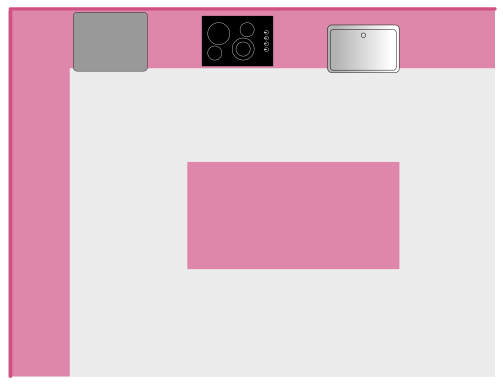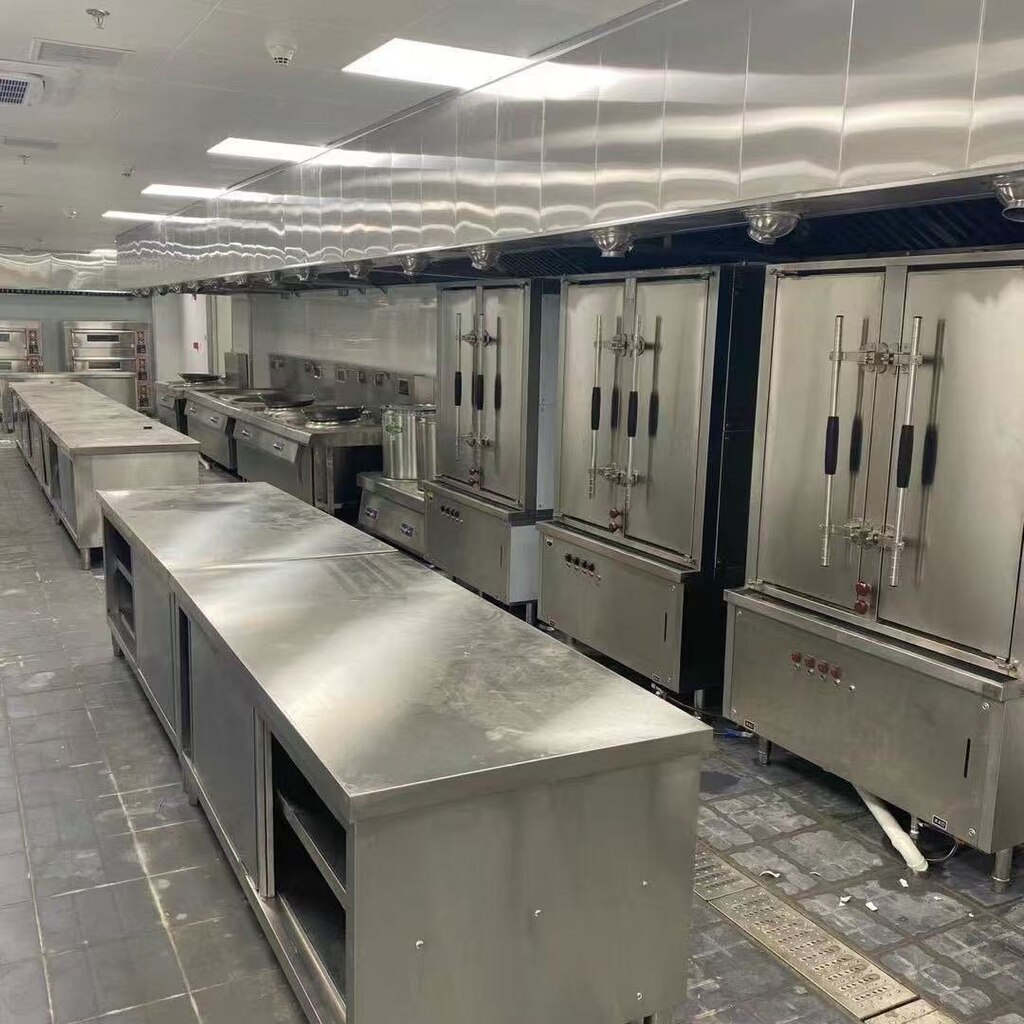Food Production Theory
| Site: | Rita Gikunda |
| Course: | Rita Gikunda |
| Book: | Food Production Theory |
| Printed by: | |
| Date: | Sunday, 7 December 2025, 9:35 AM |
Description
This course unit is intended to impact in trainees in cooking skills and attitudes required for professional
cookery
-it gives the trainee abroad knowledge of raw food materials and the application in food and beverage
application.
1. Kitchen Organization
KITCHEN –it is a place where conversion of raw food materials into a finished product takes place.
1.1. Kitchen Layout
: This means the positioning of work centers and the arrangement with respect to
equipment unnecessary service for the kitchen.
-The kitchen layout is important to the relationship between the manager and the employee.
-the amount and the type of work done by the employee affects then attitude towards work because they are
influenced by the layout design and the equipment available.
-design factors are influenced by coarse and other government requirements e.g. fire emergency exit.
-the relationship between other departments e.g. stores and service area must be emphasized.
-it is important that receiving and storage area are considered when planning the design.
-If production is poorly designed much time can be wasted in walking between the work stations.
1.2. Equipments
Equipment space must also be considered
-Large equipment .e.g. sinks, refrigerator, gas cookers can be shared to make a work section.
-Floor plan can show the general arrangement of the equipment and relationship between one area to
another.
2. Kitchen Staff
ORGANISATION CHART OF LARGE HOTELS.
HEAD CHEF
Second chef
CHEF DE PARTIE
ASSISTANT COOKS
APPRENTICE
2.1. QUALIFICATION /CHARECTERISTICS OF A SUPERVISOR /HEAD CHEF OR CATERESS
He must be lively and ability to direct every employee in their jobs.
They should pose a complete knowledge and experience in the job.
Should have good health.
Should be patient to cope with every situation.
Should have a pleasant personality and ability to converse with or types
of people.
Should have the capacity to meet the emergencies and to solve them
quickly.
Should be strict regarding punctuality and keeping necessary rules.
Should have adaptability and willingness to experiment the ideas.
Should be able to initiate actions and take responsibility.
Should be able to enforce discipline to the staff.
Should be of good temper.
2.2. 1. DUTIES OF A SUPERVISOR /CATERESS/HEADCHEF.
Administrator of the department.
Hire and firing of staff.
Compiles the menu.
Orders food stuff, receive and stores appropriately.
Organize the kitchen to ensure good work always.
To supervise the kitchen particularly during preparation, cooking
and service
3. Hygiene
IS the practice of deserving health &is one of the most subject or the person working in
the hotel catering industry to study.
3.1. Personal Hygiene
IMPORTANCE OF PERSONAL HYGIENE FOR A FOOD HANDLER
To avoid contamination of food which can led to food poisoning
To avoid close infection from staff to staff or food to food
To avoid transfer of bacteria from service to food
Food handlers are able to meet requirements for public health legislation
Promote the health & good grooming of food handler.
Take a bath or shower everyday
Hands must be washed toughly and frequently particularly after visiting the toilets or
commencing work & during the handling of food
Finger nails should be cut & kept clean
No nail furnishing
Rings except a plain wedding or a watches and many jewelry should not be worn
Hair should be washed regularly and kept covered where food is being handled
The nose should not be touched when food is handled if a handkerchiefs is used the hands
should be washed.
Mouth & lips should not be touched by the hands &no cooking utensils or fingers should be
used for tasting food. A clean tea spoon should be used for tasting & washed well afterward
Cuts, burns, scratches & similar opening of the skin should be kept covered with a water
proof dressing
Cosmetics should be used in moderations
Smoking must never take place where there is food
Spitting should never occur in the kitchen
3.2. Dressing manner in the kitchen
Aprons
Chefs jacket /coat
Chefs hat
Scarfs
People working in the kitchen should wear suitable clothing and footwear
Suitable clothing must be
1. Protective
2. Washable
3. light in weight and comfortable
4. Strong
5. absorbent
PROTECTIVE
Cloth worn in the kitchen must protect the body from excessive heat
Chef‟s jackets are a double breast that protects the chest &arms from the heat of the store &prevent
hot tools or liquids burning &scalding the body e.g. chefs, jackets, aprons.
APRONS
Are designed to protect the body from being burned &particularly to protect the legs from any liquid
which may be spilled there4 aprons should be of sufficient length to protect the legs.
CHEFS HUT
Should be designed to enable air to circulate on top of the head &that‟s keeps the head cooler.
The main purpose of the hut is to protect loose hair dropping into the food & also to absorb aspiration
on the forehead.
FOOTWARE
Should be low and in good repair so as to protect &support the feet.
They should be closed and comfortable coz the kitchen staffs are mainly on their feet for many hours.
WASHABLE
The clothing should be of an easily washable material as many change of clothing is required
SUITABLE COLOUR